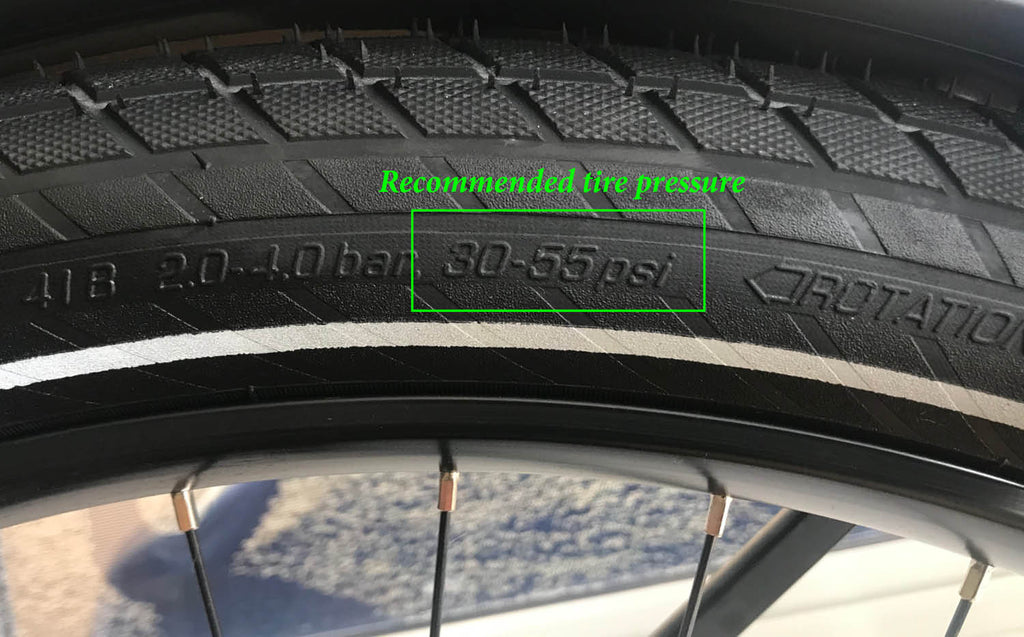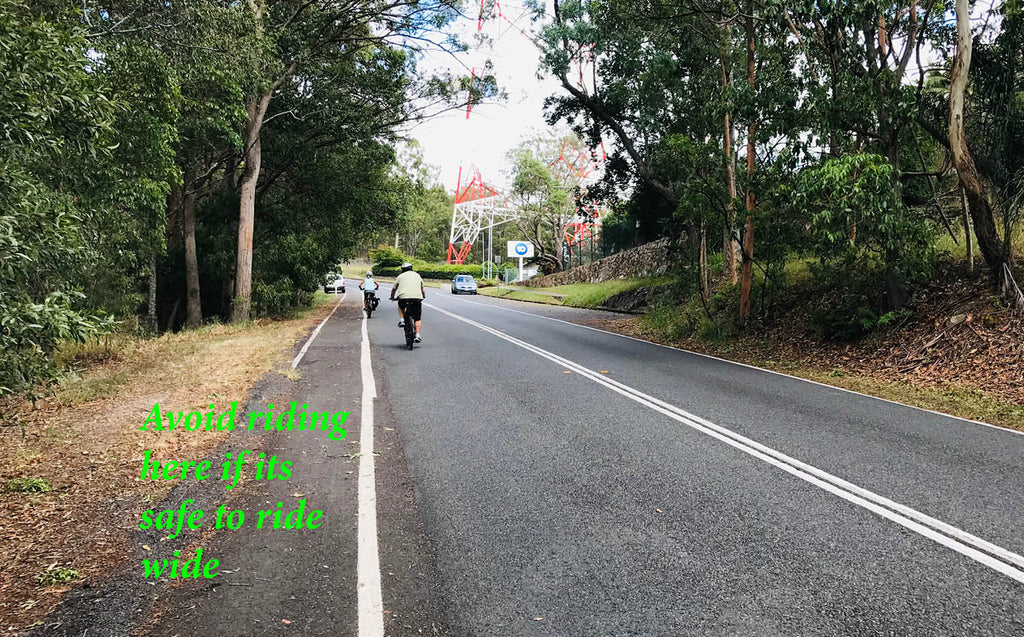Getting a puncture can be incredibly inconvenient. And while it can sometimes just be plain bad luck, about 90% occur because these three simple maintenance steps are being neglected...
Avoid getting punctures with these three easy tips
1. Keep your tires inflated to the correct pressures

The #1 reason why punctures occur is due to tire pressures being too low. With the extra weight of an electric bike, which often includes cargo, you are inviting a flat tire if you don’t keep your tires inflated at the recommended pressure.
Tire pressures are simple to check and very simple to remedy if they are too low. Best to do just before you ride and all you need is a bike pump and a couple of minutes to pump up your tires. The bonus is that you will also get much better range from your battery if you are running at the correct pressures.
There are two things you need to know
- What is the right pressure? and
- What valve does your tube have (so you can use the right pump attachment)?
How to find what pressure your tires should run at?
The recommended tire pressures are always written on the wall of your tire. Pump to the lower to mid-end of the range if you are riding on softer ground and need more traction; pump to the higher end if you are riding on hard surfaces.

What tire valves do I have?
You need to know what valve you have on your tubes so you can use the right attachment to pump it up. See the image below to see the two different types.

Tire pressures also make a big difference to how your electric bike handles, how quickly you can ride and how quickly you can stop.
Running a tire with too little pressure can be dangerous as it creates too much roll on the rim and can also dent or bend a rim if you hit a pothole. It will also increase tire wear and reduce the range and efficiency of your battery.
Too much pressure is also dangerous. Over inflating a tire can lead to the tire valve bursting or the inner tube exploding. This is because it expands due to changes in external temperatures or heat transfer from the rim (if you are using rim brakes).
We generally check and adjust our tire pressures every time we ride when we first get a bike to understand how well the tube holds it pressure. After that, its every week or couple of weeks depending on your riding.
It only takes a couple of minutes to pump them up, especially if you use a good track pump with a pressure guage (there are plenty around - ask us if you want to buy one we use).
If you don’t have a bike pump you could drop into a nearby bike shop to have them checked, but you should offer to pay a small amount for the shop’s time and use of equipment.
2. Replace your tires and tubes when worn or damaged

Your tires are your first line of defense against crud on the road and they do the very important job of providing grip for the surfaces that you ride on.
Just like motor vehicles, your tires will wear as you use them. A rule of thumb is to replace your tires every 1-2 years but this really depends on the quality of your tire and how you use it. If you are a rider who likes to skid your tires expect to be replacing them far more often.
How do I know my tire is worn?
See the image below for the difference between the tread (amount of rubber) on a new tire versus a worn tire that needs replacing.

What size is my tire? – Information for replacing it

Each time you ride you should do a quick check of your tires to make sure they haven’t got any damage eg cuts from glass from your last ride, and also for wear. A worn or cut tire is much more prone to a puncture and blow out.
When you do this also check your spokes to see that that there aren’t any broken or loose ones. If you are likely to be riding in areas that are prone to glass or sharp objects eg where there is lots of building happening, then consider putting slime in your tires for extra protection.
3. Choose carefully where you ride and look ahead

As the rider you have complete control on where you choose to ride.
It may sound obvious but looking ahead to avoid debris on the road eg. glass or choosing a path that is cleaner eg don’t ride in a gutter, will go a long way towards a trouble-free ride. Also be mindful too of how you hit gutters and pot holes – another easy way to puncture a tire if your wheel sustains a big hit.
Identify what to avoid when riding on a road

Avoidance is best when it comes to flat tires. While it can sometimes be just plain bad luck, as the rider you have a big influence on whether or not you will get a flat tire through some simple maintenance and riding awareness.
Puncture Protection - Reinforcing Your Tires
There are a number of puncture protection products available which can reinforce your tires and help avoid punctures. These range from sealants, tire liners and tubes and tires which are especially made for greater puncture protection.
Talk to your local bike shop about what will work best in the area you live.
Tip: Tire liners and different tires must suit your rim size. See 'What Size is My Tire' above to let your bike shop know so they can recommend the best solution.
How do I repair a flat tire on an electric bike?
For mid-drive electric bikes it is quite straightforward. Assuming you don’t have internal hub gears or dynamo lighting it is the same as changing any other bicycle.
If you don’t know how to change a tire Cycling Brisbane run free bike maintenance courses.
It becomes a bit more complex if you have a hub motor, internal hub gears, carbon belt drive and/or dynamo lighting. If you don’t know how to do this yourself and need it repaired then book your bike in to our service centre.




